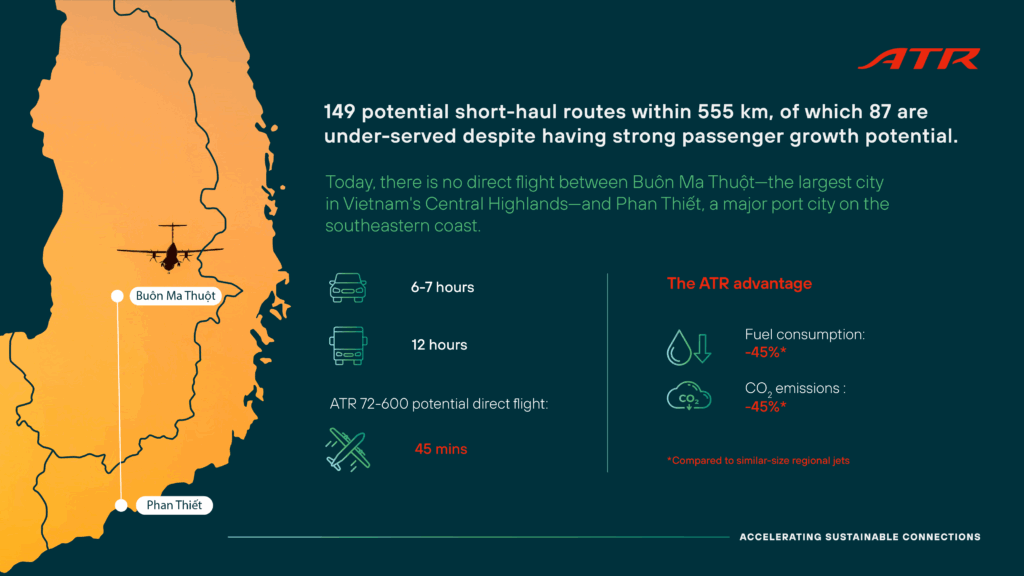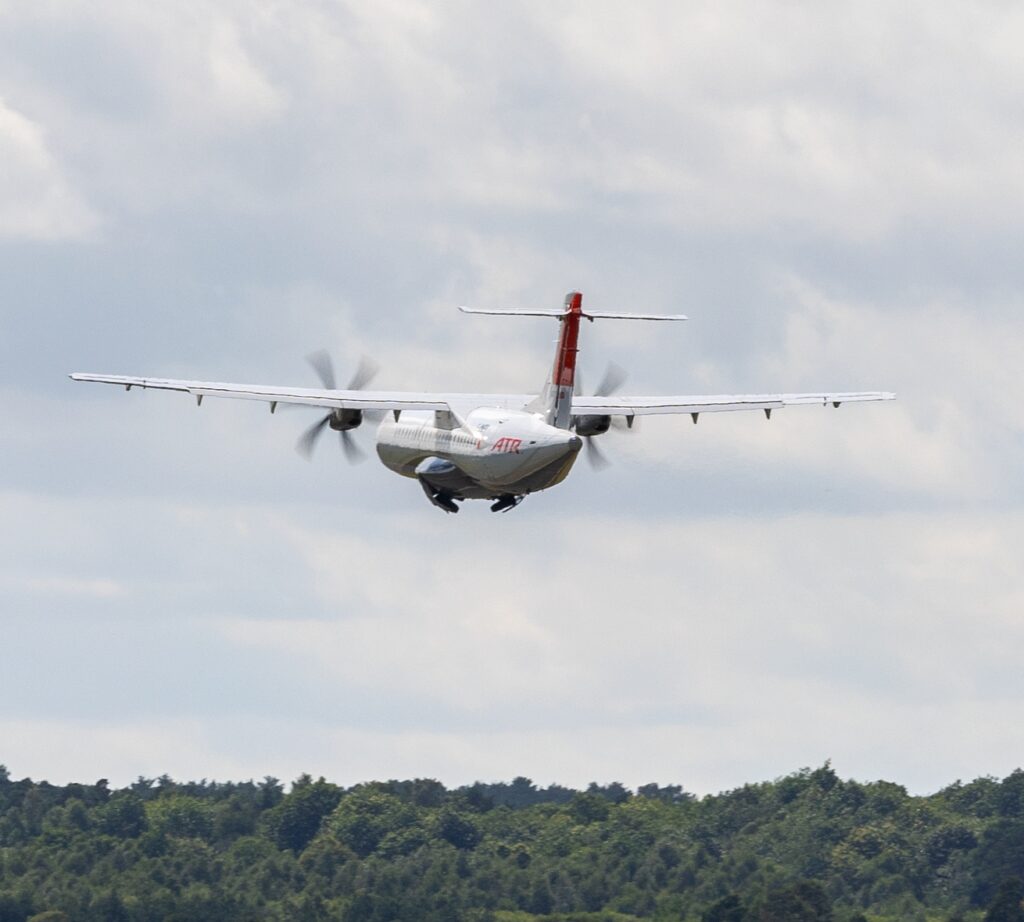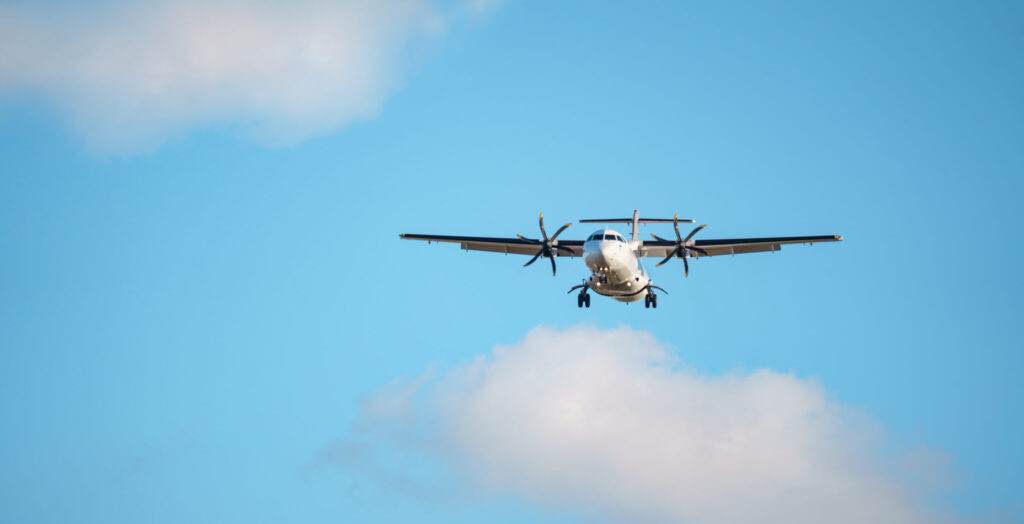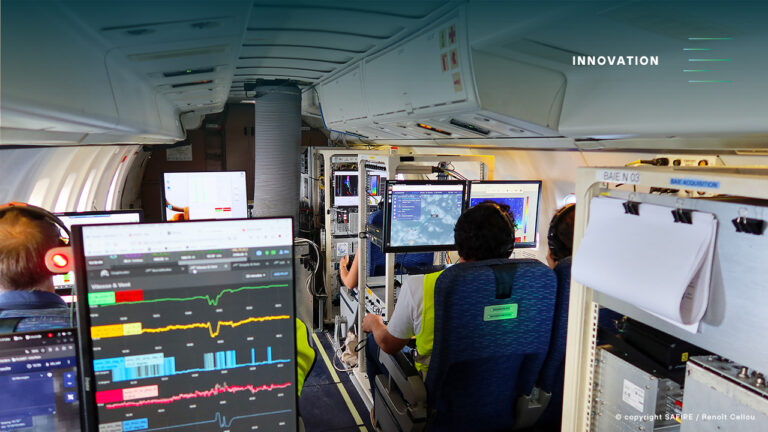How Regional Aviation Can Propel Vietnam’s Next Growth Chapter
Vietnam’s economic journey is one of transformation, tenacity and triumph. Ever since the 1980s, when the country opened its economy to the world through the Đổi Mới reforms, it has defied expectations. The country is now one of Asia’s fastest-growing economies. Even during the pandemic, Vietnam experienced a GDP growth of over 2.5%.
Cities and towns, both big and small are pulsing with energy and change. Economic development and prosperity are not restricted to the major cities of Hanoi and Ho Chi Minh City. Instead, there is opportunity across the nation for homegrown enterprises to flourish, create more jobs and improve peoples’ living standards.
But how to connect all those towns and cities so each may flourish even further?

The Missing Link: Regional Aviation
One critical enabler of social and economic development is missing – a regional aviation network.
Regional aviation – short-haul routes under 300 nautical miles (555 km) served by aircraft seating fewer than 80 – is largely absent in Vietnam. Nearly 90% of domestic air traffic is funnelled through just ten airports, leaving regional airports underused. There are only five commercial regional aircraft in the whole of Vietnam, representing just 2% of the commercial aircraft fleet.
This compares to a global average of 25%. If you look at a market like Japan – with a similar population size to Vietnam – regional aircraft account for 17% of the total fleet.
The lack of regional connectivity in Vietnam means it can take a lot of time to move around. People in Vietnam still need to drive for many hours to reach certain places, when the same distances could be covered in less than an hour by aircraft. For example, traveling from Buôn Ma Thuột, the largest city in Vietnam’s central highlands and a business centre for Vietnam’s coffee industry, to the nearest major port city of Phan Thiết on the southeastern coast, takes 6-7 hours by car or approximately 12 hours by bus. But the same journey could be completed in less than 45 minutes by a regional turboprop. Even when people do have the option to fly, they sometimes need to make two flights to get to their destination because there is no choice to fly direct.

A case in point, there are no direct flights between Huế, the nation’s former imperial capital located on Vietnam’s central coast, and Pleiku, a provincial capital in the central highlands, that is popular with tourists due to its rich cultural history, including temples. Travellers must connect through Ho Chi Minh City, turning what could be a short hop – less than an hour with a regional turboprop – into a minimum 5-hour journey once layovers and transfers are factored in.
Twenty-five percent of air routes in Vietnam are under 555 km – distances perfectly suited for turboprops.


A Blueprint for Transformation
ATR partnered with the leading Vietnamese engineering consultancy Transport Engineering Design Inc. (TEDI) to assess the country’s potential for regional aviation. The findings reveal a clear opportunity – 149 potential short-haul routes within 555 km, of which 87 are under-served despite having strong passenger growth potential.
These regional air routes connect key economic regions and high-potential destinations — whether it be agricultural centres like Pleiku and Cần Thơ or emerging tourism hotspots like Phan Thiết and Phú Quốc.
Connecting these communities by air would significantly reduce travel times, improve regional access and generate new economic momentum.
The ATR Advantage
This is where regional turboprops like the ATR 72-600 shine. Designed specifically for short-haul, low-density routes, the aircraft offers:
- 45% lower fuel burn and CO₂ emissions than comparable regional size jets – supporting Vietnam’s sustainability goals
- Lower operating costs, allowing airlines to profitably serve thinner routes that larger aircraft cannot
The ATR also brings modern technology to the cockpit and cabin, providing enhanced safety, reliability and comfort.

For airlines, the ATR offers an economically sound way to stimulate demand on thin routes. For passengers, the ATR service provides opportunity for more choices, lower fares and better access.
With 25 of these aircraft, Vietnam could build a regional aviation network, connecting dozens of underserved cities and cutting travel times, all while growing sustainably. Vietnam plans to expand to 30 commercial airports by 2030, so the case for regional aviation becomes even stronger.

The Economic Impact
The benefits of regional aviation cascade across local economies – enabling businesses to operate efficiently across multiple locations, allowing investors to discover new opportunities beyond the big cities, and providing local businesses access to national and international markets.
The impact extends far beyond the business sector. Studies show that a 10% increase in regional flights can lead to a 5% rise in tourism, local GDP can grow by up to 6% with improved connectivity, foreign direct investment may increase by 8% where air access improves1.
For local communities, these aren’t just numbers — they’re pathways to more inclusive, regionally balanced growth.
What Regional Connectivity Truly Delivers
Connectivity is about more than movement. It’s about creating a national network that benefits everyone.
It means speed – reaching your destination without lengthy road trips, detours or overnight stays. It means more choice – having several flights a day on a particular route so you can have a choice of flight times and, if you wish, travel to a destination and return the same day, or any other day that fits your schedule. It means access – allowing previously underserved cities and towns to connect to the rest of the national economy and the world. And it means reach – extending the flow of trade, talent, tourism and capital beyond traditional corridors.
Vietnam’s remarkable transformation – from a low-income country to one of Asia’s fastest-growing economies – is often described as a miracle. But that miracle can be shared more widely.

Regional mobility helps extend opportunity to every province, district and citizen, not just those in major cities. By unlocking the full economic and social potential of its regions, Vietnam strengthens its sovereignty. A country where every community is connected and empowered is a country that is more resilient, more prosperous, and more united.
Crucially, regional aviation isn’t competing with Vietnam’s planned high-speed rail network. It will complement it. While rail can efficiently connect high-volume city pairs, regional aviation reaches places rail may never touch, and does so faster across short-to-medium distances. Countries like France and Japan have proven that a well-integrated multimodal system — combining regional air services with high-speed rail — delivers unmatched national connectivity.

Ready for Takeoff
The runway is clear. ATR stands ready to help write the next chapter — partnering with Vietnamese stakeholders to deliver solutions that are modern, sustainable and built to meet Vietnam’s needs.















